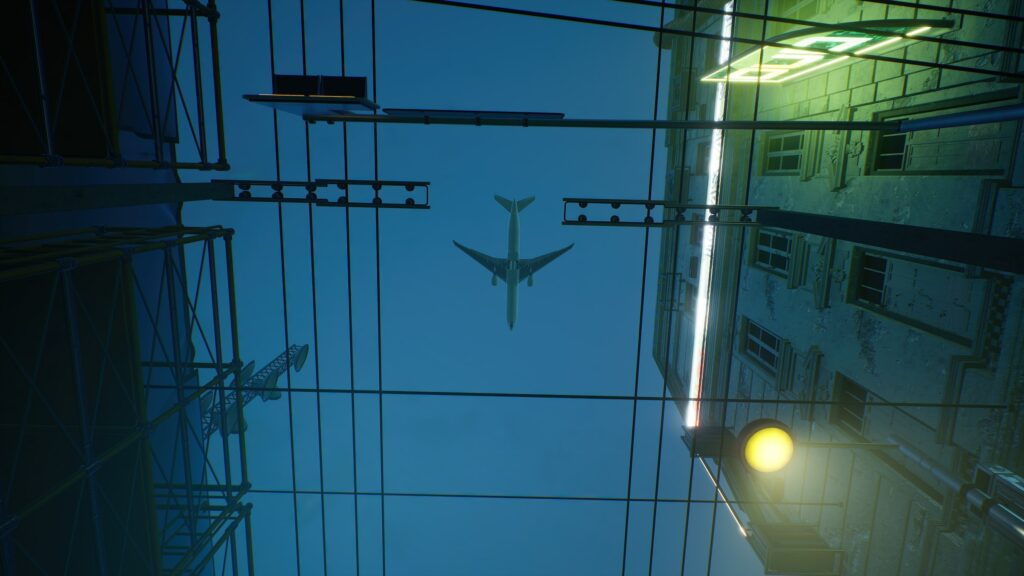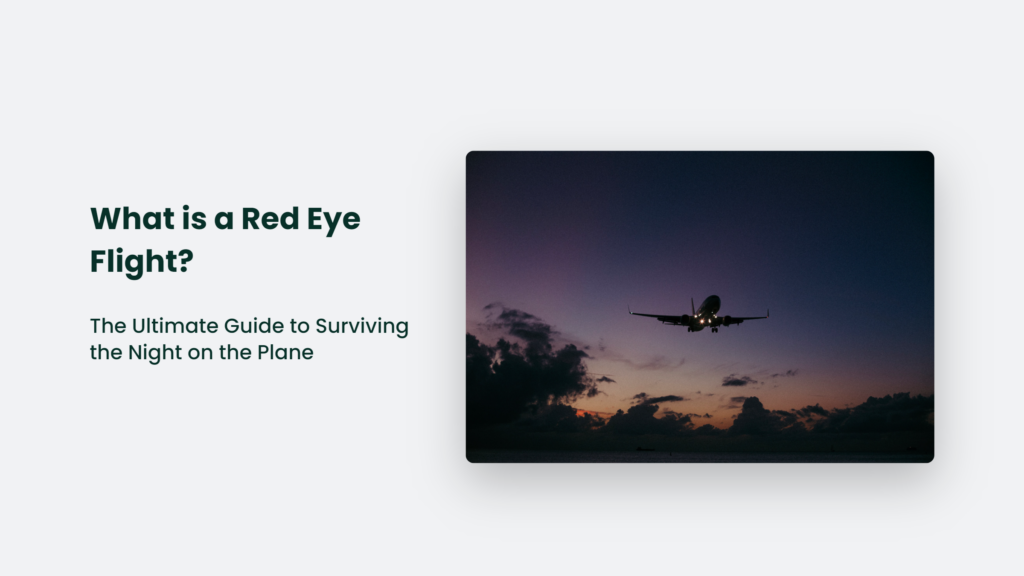

What is a Red Eye Flight? The Ultimate Guide to Surviving the Night on the Plane

As Seen On
Ah, the infamous red-eye flight. The mere mention of it can strike fear into the hearts of even the most seasoned travelers. But what is a red eye flight, and why is it so dreaded? More importantly, how can you survive the night on the plane and emerge from the experience relatively unscathed?

What is a Red Eye Flight?
A red-eye flight is simply a flight that departs late at night and arrives at its destination early the next morning. The term “red-eye” comes from the fact that passengers often arrive at their destination with bloodshot, tired eyes due to the lack of sleep during the flight.
The primary reason these flights are so dreaded is because they disrupt our natural circadian rhythms, which are designed to have us sleeping at night and awake during the day. When we fly overnight, our bodies are essentially fighting against their natural instincts, which can lead to fatigue, disorientation, and a whole host of other unpleasant side effects.
The Pros and Cons of Red-Eye Flights
There are both pros and cons to taking a red-eye flight. On the plus side, they can be more affordable than daytime flights, as they are generally less in demand. Additionally, they can save you valuable vacation time, as you’ll be sleeping during the flight and arriving at your destination ready to start your day.On the downside, red-eye flights can be incredibly uncomfortable and exhausting.
The lack of sleep, combined with the cramped quarters of an airplane, can make for a miserable experience. Furthermore, if your flight is delayed or you have a long layover, you may find yourself stuck in the airport at an ungodly hour, wishing you’d never left home in the first place.
What Causes a Red Eye Flight:
There are several causes and utilities of red-eye flights:
- For the Airline: Overnight flights enable more use of aircraft that would otherwise be idle at night.
- For Airports: It may be rational to divert the stream of passengers away from peak hours, as the capacity for flight operations during the daytime may be fully exhausted in major airports, and the price of airport slots may be higher at peak hours.
- For Passengers: While the benefits and disadvantages are subjective, some passengers find the traffic to and from the airport, as well as the airport experience, less stressful at these hours
In addition, red-eye flights can cause fatigue, insomnia, and red eyes due to the disruption of passengers’ natural circadian rhythms, making it harder to fall asleep and stay asleep. The timing of the flight can also lead to jet lag, which can cause fatigue, headaches, and other symptoms that can affect the enjoyment of the trip.
How to Survive a Red-Eye Flight
Despite the challenges, there are ways to make your red-eye flight more bearable. Here are some tips to help you survive the night on the plane:
- Bring your own comfort items: Pack a cozy blanket, a travel pillow, and some noise-canceling headphones to help you get some much-needed rest.
- Dress comfortably: Wear loose, comfortable clothing and pack a light sweater or jacket in case the cabin gets chilly.
- Stay hydrated: Drink plenty of water before and during the flight to combat dehydration and fatigue.
- Avoid caffeine and alcohol: Both substances can disrupt your sleep and exacerbate jet lag, so it’s best to avoid them during your flight.
- Create a sleep-friendly environment: Use a sleep mask or an eye pillow to block out light, and consider using earplugs to drown out any distracting noises.
- Try to sleep: It may seem obvious, but actually, making an effort to sleep during the flight can significantly improve your experience.
Frequently Asked Questions:
What is the best time to book a red-eye flight?
There isn’t a definitive answer, but generally speaking, booking at least six weeks in advance is recommended for the best deals.
Are red-eye flights more dangerous than daytime flights?
No, there is no evidence to suggest that red-eye flights are any more dangerous than daytime flights.
How can I find the cheapest red-eye flights?
Use travel search engines like Skyscanner or Kayak to compare prices across multiple airlines and find the best deals.
The Bottom Line:
In conclusion, while red-eye flights may not be the most enjoyable way to travel, they can be a practical and affordable option for many passengers. By following the tips above and being prepared for the challenges that come with flying overnight, you can increase your chances of having a successful and relatively comfortable red-eye flight experience.
Konger
Up until working with Casey, we had only had poor to mediocre experiences outsourcing work to agencies. Casey & the team at CJ&CO are the exception to the rule.
Communication was beyond great, his understanding of our vision was phenomenal, and instead of needing babysitting like the other agencies we worked with, he was not only completely dependable but also gave us sound suggestions on how to get better results, at the risk of us not needing him for the initial job we requested (absolute gem).
This has truly been the first time we worked with someone outside of our business that quickly grasped our vision, and that I could completely forget about and would still deliver above expectations.
I honestly can't wait to work in many more projects together!
Disclaimer
*The information this blog provides is for general informational purposes only and is not intended as financial or professional advice. The information may not reflect current developments and may be changed or updated without notice. Any opinions expressed on this blog are the author’s own and do not necessarily reflect the views of the author’s employer or any other organization. You should not act or rely on any information contained in this blog without first seeking the advice of a professional. No representation or warranty, express or implied, is made as to the accuracy or completeness of the information contained in this blog. The author and affiliated parties assume no liability for any errors or omissions.

